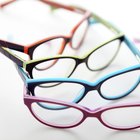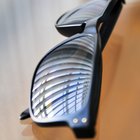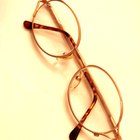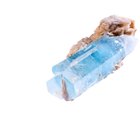
Eyeglasses are corrective instruments that are worn on the face to correct deficiencies or lacking areas of a person’s vision. They can also be worn for eye protection or pure style, depending on the preference of the wearer. Eyeglasses are innovative instruments that have changed very little since their invention and adaptation in the late 1700s.
Ancient Use
Contrary to popular belief, the creation of eyeglasses actually dates back long before Benjamin Franklin’s adaptation of them in the 1700s. Earliest versions of eyeglasses were made in Italy as early as 1000 A.D. with quartz lenses set into bone, leather or metal frames or monocles. These glasses were purely used for magnification, however.
Population and Eyeglasses
According to Earth 911, roughly 25 percent of the world’s population requires eyeglasses in some form.
Supply and Demand
Earth 911 also states that more than 1 billion people in the world require eyeglasses, but cannot afford or find them.
Blindness
More than 50 percent of the residents in African institutions for the blind would be able to read large print with proper eye glasses.
Cost Efficiency
Earth 911 states that an average pair of eyeglasses in Africa can be priced at more than three months' normal salary for an average African.
Contemporary Glasses
Modern glasses are usually made from plastics rather than glass to prevent cracking and damage to the eyes in the event of an accident. The plastics used are often resistant to cracking or breaking and sooner snap than shatter. Plastic also is lighter than glass.
Waste Not
According to Earth 911, more than 4 million pairs of standard reading glasses are thrown away every year in North America.
Scientific Advancement
Eyeglasses inspired the creation of contemporary contact lenses in 1949, which before that had been a dangerous experiment practiced by scientists in Germany, Italy and France. Eventually, this would lead to corrective laser eye surgery, developed and commonly used in 1991.
Evolution
Eyeglasses went through many different stages of evolution ranging from the creation of bifocals, trifocals, fused bifocals, and other multifocal lenses, all of which are still used today.
Chemical Composition
Most plastics used for eyeglasses today are coated with certain chemicals that make them resistant to scratching, water damage and glare.
Related Articles

How to Use Armour Etch to Strip ...

How to Remove the Lens From Plastic ...

How to Sterilize Eyeglasses

Eye Contacts With Reflective Effect

How to Donate Old Prescription ...

The History of Geneve Watches

The Significance of Earrings on Men

The Difference Between Polycarbonate & ...

How to Clean White Leather Watches

How to Spot Fake Serengeti Sunglasses

How to Repair Scratches in Polarized ...

How to Make Transition Lenses Darker

How to Remove Scratches From Eyeglasses

List of the Types of Semi-Precious ...

How to Fix Transition Lenses

How to Replace a Nike Triax 50 Battery

The History of Steel Toe Boots

How to Clean Eye Glasses With Windex

How to Prevent Pock Holes From ...

How to Get Scratches Out of Eyeglass ...
References
Writer Bio
Cameron Burry has been a professional writer and editor since 2005. He has been published with Hasbro's Dungeons and Dragons as well The Onion: Online and Costa Rican Dentistry: Online. He holds a Bachelor of Arts in creative writing and English literature from Murray State University.
Photo Credits
Jupiterimages/Polka Dot/Getty Images